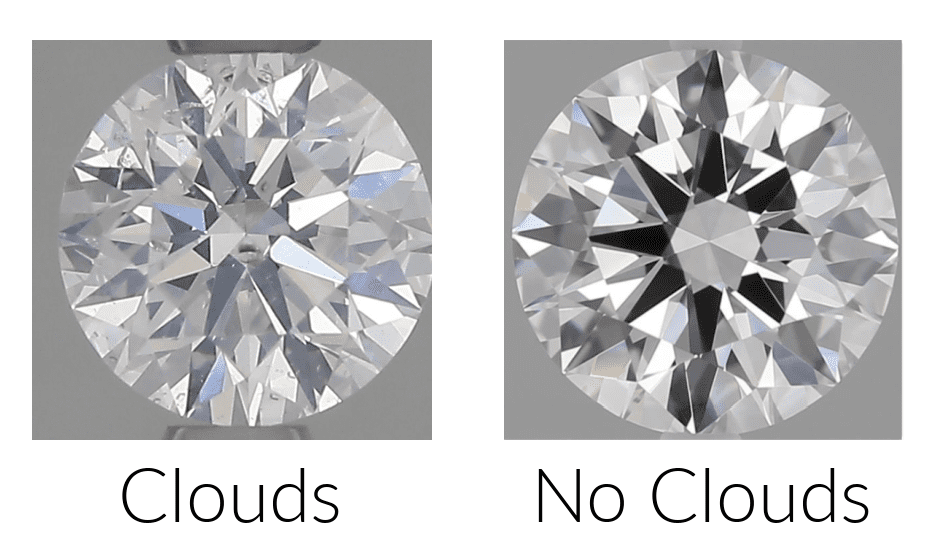SI1 Diamond Clarity | Rare Carat
When a diamond’s internal characteristics are visible at 10x magnification, it is considered Slightly Included 1. These traits — formed because of the diamond’s environment under heat and pressure — make each stone unique and are not typically visible to the naked eye. Believe it or not, the majority of diamonds circulating in the market fall within the slightly included range. You can usually expect to find characteristics like clouds, carbon spots, pinpoints, twinning wisps, or feathers in SI1 graded diamonds. Check out this post for a more in-depth explanation of these types of inclusions.
Although SI1 clarity diamonds are becoming one of the most adopted clarity grades, there are no general rules or consistency within the category. Yes, SI1 diamonds can be a better deal, but unless you’re armed with the right information, you can end up with a bad buy. Because a diamond specimen's clarity levels are indeed an important factor of its intrinsic value and overall appeal, the question remains whether the SI1 clarity category is a solid option to buy. At Rare Carat, we’re here to give you all the facts to match you with the perfect diamond at the best possible price.
While you may be getting a bargain for an SI1 diamond, make sure to check a few boxes before buying.
I Scream for Eye Clean
If you are looking for an exquisite diamond for an affordable price, an eye-clean SI1 is the ticket. “Eye-clean” is the industry term for a diamond that has no visible natural characteristics. Anything that is graded in the SI range is going to have inclusions, but if they are located at the pavilion and are hazy or white in color, you probably won’t be able to see them without magnification. Even if your diamond is considered eye-clean, if you discover that the inclusions in an SI1 diamond are found just beneath the diamond table region, you might want to find a different stone.

Hard Pass
Of course, everyone wants a beautiful-looking diamond, but there are some types of characteristics that will be harmful to your stone in the long run. Although diamonds are the strongest stone on earth, they are not indestructible. Inclusions like etch channels, which can mostly be seen under magnification, can weaken your stone. Knots and feathers are noticeable to the naked eye and will also affect the durability of the diamond. Generally speaking, any notable inclusion located on the top or in the center is a no-go. Lastly, any clouds hovering in a big portion of the gem’s surface will affect its brilliance.


Certification Station
Getting a reliable certification on your SI1 diamond will help ensure the quality and durability of your diamond. Not all inclusions will be visible under magnification, which is where a clarity plot comes into play. A clarity plot is a map of all the inclusions and their locations in a diamond. All SI1 diamonds should have inclusions on the plot, but if not, make sure to check the comments for “Clarity based on clouds that aren’t shown.” or similar on the report. GIA and AGS are the laboratories with the best grading systems.


Best Cuts
Some diamond shapes will hide inclusions better than others. The larger the diamond, the more visible the inclusion. If you want a Round or Princess cut, aim for a smaller carat weight to optimize aesthetics. Oval, Cushion, Radiant, Marquise, and Pear shapes are the best shapes for working with an SI1 diamond while still retaining carat weight. Also, settings like prongs or bezels will be more flattering than others.
An SI1 diamond offers some of the best value if you can take the time to look for an eye-clean stone. Instead of paying for an overall higher clarity grade, you’re getting an eye-clean diamond for much less. Not only that, but these characteristics will make your diamond one-of-a-kind.
Because finding an eye-clean diamond at the SI1 level can be challenging, feel free to reach out to our gemologists and we’ll help match you with a diamond with the best value.

